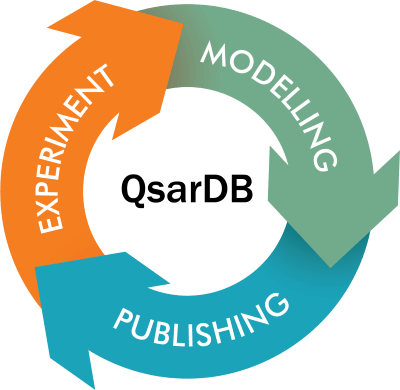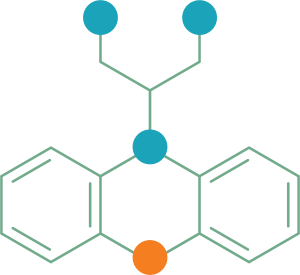Transparent QSARs
Create and upload QDB archive

The QsarDB repository requires your model and associated data to be organized. A small effort will make your research transparent and usable.
Explore chemicals
Search from almost 85000 structures

Exact chemical search, similarity and substructure searches find QDB archives containing the query compound.
Recent submissions
Show your study on this list
- 13 May 2025
- Beljkas, M.; Zukic, S.; Mirjacic Martinovic, K.; Djuric, A.; Vuletic, A.; Corinne, J.; Hölzel, J.; Böttger, E.; Gajić, M.; Santibanez F, J.; Stark, H.; Živković, A.; Srdic-Rajic, T.; Arimondo, P.; Maran, U.; Nikolic, K.; Petkovic, M.; Oljacic, S. Molecular Docking, Machine Learning-Guided Design, Synthesis, and Biological Evaluation of Novel Multitarget HDAC/ROCK Inhibitors. ChemRxiv 2025.
- 07 May 2025
- Akinola, L. K.; Uzairu, A.; Shallangwa, G. A.; Abechi, S. E. Development of binary classification models for grouping hydroxylated polychlorinated biphenyls into active and inactive thyroid hormone receptor agonists. SAR and QSAR in Environmental Research 2023, 34, 267–284.
- 25 Oct 2024
- Käärik, M.; Krjukova, N.; Maran, U.; Oja, M.; Piir, G.; Leis, J. Nanomaterial texture-based machine learning of ciprofloxacin adsorption on nanoporous carbon. Int. J. Mol. Sci. 2024, 25, 11696.
- 21 Oct 2024
- Belfield, S. J.; Cronin, M. T. D.; Enoch, S. J.; Firman, J. W. Guidance for Good Practice in the Application of Machine Learning in Development of Toxicological Quantitative Structure-Activity Relationships (QSARs). PLOS ONE, 2023, 18, e0282924.
Recent blog posts
On our mind
- 28 Sep 2023
- CoreTrustSeal certificate awarded!
- 29 Jun 2023
- Integration of QsarDB models into the OECD QSAR Toolbox
- 11 Apr 2023
- Reviewing literature references to the repository from 2022
- 29 Mar 2023
- Improving the usability of the repository front end
- 10 Oct 2022
- CoreTrustSeal certification

